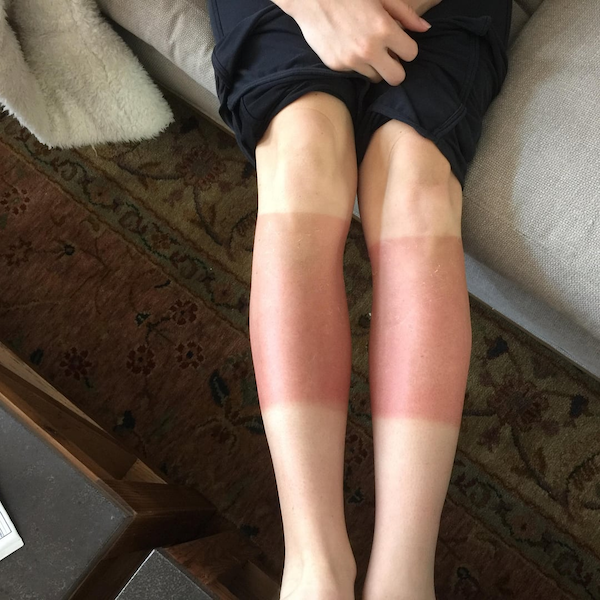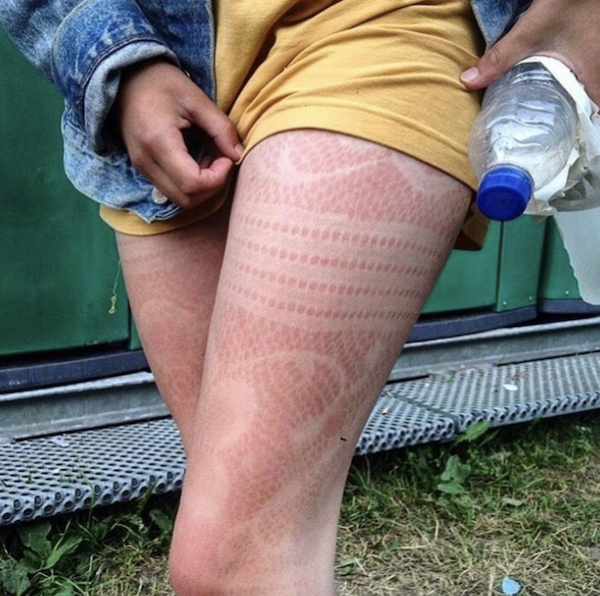The newest registered user is гераскинс
Our users have posted a total of 48009 messages in 7050 subjects

WORLD CLOCK
INFO VINE * 50 Photos That Show The History of Alaska *
Valley of the Sun Casual Club :: WORDS , FACTS , DATES , GAMES & TRIVIA & HISTORY :: INFORMATION VINE
 INFO VINE * 50 Photos That Show The History of Alaska *
INFO VINE * 50 Photos That Show The History of Alaska *

Photo Courtesy: [AlaskaSign.jpg/Author Unknown/Wikipedia]
Alaska has a population of about 683,879 people. About half of Alaska's residents live in the Anchorage area. Alaska was proclaimed a state of the United States of America on January 3, 1959. Some of Alaska's most popular annual events are the Sled Dog Race, World Ice Art Championships in Fairbanks, the Blueberry Festival, Alaska Hummingbird Festival in Ketchikan, and the Sitka Whale Fest.
A 13-year-old boy designed Alaska's flag, the state bird is the willow ptarmigan, and the state sport is dog mushing. There are 224 tribes and 20 languages spoken in Alaska. There are over 3,000 rivers and three million lakes, and the nation's two largest forests are located in Alaska.
Potlatch dance on Chilkat River, Alaska
The Potlatch was a gathering that was a combination of competition, peacekeeping, and a show of wealth. The traditional Potlach had social, religious, and economic significance. During a Potlach, members of society had a surplus of food. A Potlach happened with the birth of a child, a surplus of food, or a death.

Photo Courtesy: [Potlatch dance on Chilkat River, Alaska/Author Unknown/Library of Congress]
It consisted of the feast, dancing and singing, oratory, and the distribution of gifts. The Potlatch was a show of wealth. Dancing is the focal point of the Potlatch, and a Potlatch can last a week. The Potlatch is concluded with gifts; they are piled high in the middle of the room and distributed to the guests.
Nome
Nome was a city in the Unorganized Borough of Alaska. The city was home to the largest gold pan in the world. The Iditarod Dog Sled took place in Nome. The population of Nome was a mixture of Inupiat Eskimos and non-Natives.

Photo Courtesy: [Store norske leksikonNome – by i Alaska, USA – Store norske leksikon/Author Unknown/GoogleImages]
In 1898, gold was discovered on Anvil Creek and then was found in the beach sands. Fires and storms destroyed most of Nome's gold rush era architecture. The reality television series Bering Sea Gold was set and filmed in Nome; some motion pictures were also filmed in Nome.
Gold Miners at Work in the Klondike Mining District, Alaska
The Klondike Gold Rush was a migration to the Klondike region between 1896-1899. Gold was discovered by local miners in 1896, which triggered a stampede of prospectors. Some became wealthy, but most did not. They would either follow the Chilkoot or the White Pass trails to the Yukon River and sail down to the Klondike to reach the goldfields.

Photo Courtesy: [Gold Miners at Work in the Klondike Mining District, Alaska/Author Unknown/Library of Congress]
Their equipment weighed close to a ton, which they carried themselves. They were required to bring one year's worth of supplies with them. They had to contend with the mountainous terrain and cold climate. Once gold was found in other areas, the Klondike Rush ended.
Wharves at Skagway
Skagway was a first-class borough in Alaska with a population of 1,183. The port of Skagway was a popular stop for cruise ships, and the White Pass and Yukon Route narrow gauge railroad trails were used for gold mining. During the Klondike gold rush, the steamer Queen would dock at the wharf and drop off thousands of hopeful miners.

Photo Courtesy: [File:Wharves at Skagway, Alaska (J6110).jpg/Author Unknown/WikimediaCommons]
Between 1897 and 1898, Skagway was a lawless town, and in 1898, a steam-operated aerial tramway was constructed up the Skagway to ease the burden of prospectors. By 1899, Skagway's economy began to collapse, and in 1900 it was incorporated as the first city in the Alaska Territory.
Mushing
Mushing was a sport powered by dogs. It used one or more dogs to pull a sled on snow. Many prospectors came to the Yukon with sled dogs during the gold rush, and sled-dogs became the common transportation mode in Yukon. Mushing was used for hauling wood, delivering goods or the mail, and equipment hauling.

Photo Courtesy: [Winters Snow Nature - Free photo/Author Unknown/Pixabay)
Natives used dogs to help with hunting, for protection, and travel. Mushing hit the radar in 1925 when a diphtheria outbreak threatened to extinguish the village. The dog sled teams carried the life-saving serum nearly 700 miles. The typical sled dog was the Alaskan huskies.
Old Tlingit Indian
Tlingits are indigenous people of the Pacific Northwest. Their language was also called Tlingit. Their society and culture developed in the rainforest of Alaska, and they maintained a complex culture. Tlingit society was divided into two tribes, the Raven and the Eagle.

Photo Courtesy: [Winter & Pond, Juneau, Alaska/LibraryofCongress]
The tribes usually built plank houses from cedar; they were built with a foundation to store their belongings under the floors. The men worked in the fishing industry, and women were employed at canneries or in the local handicraft industry.
Chilkoot Pass
Chilkoot Pass was a high mountain pass through the Boundary Ranges of the Mountains in Alaska. The trail was a long route used by the Tlingit for trade. Prospectors and packers used it during the Klondike Gold Rush to get through the mountains. The trail is reported to have spanned between 28 and 33 miles. To travel the trail, Canadian officials required them to take one year of goods with them.

Photo Courtesy: [B.L. Singley/LibrayofCongress]
The Chilkoot trail rose 900 feet, and the trail was covered with giant, sharp rocks. In the winter, the ice would be cut into 1500 steps, known as the Golden Stairs. There was a high risk of avalanches, but many took this trail because it was the cheapest and the quickest.
Russian Exploration in Alaska
The European discovery of Alaska was in 1741 when a Russian expedition led by Danish navigator Vitus Bering spotted the Alaskan mainland. Russian hunters were soon making trips into Alaska and were exposed to foreign diseases.

Photo Courtesy: [WM Zeigler/Library of Congress]
In 1784, the Three Saints Bay Colony was founded on Kodiak Island. After, the Alaskan mainland was explored. Dane Alexei Chirikov sent men to shore, which made them the first Europeans to land on the northwestern coast of North America.
King Island, Alaska
King Island was an island in the Bering Sea, west of Alaska. The island was one mile wide, with steep slopes on all sides. James Cook named King Island when he was the first to see it in 1778. He named the island after Lt. James King, a member of his party.

Photo Courtesy: [Edward S. Curtis/Library of Congress]
The Inupiat once called the island home during the winter. In the mid-1900s, the children of Ukivok were forced to go to school on the mainland. The rest of the adults and elders then moved to the mainland as well. All King Island people had moved to mainland Alaska by 1970.
Mt. McKinley
Mt. McKinley was also called Denali and was the highest mountain peak in North America. The summit elevation was 20,310 feet above sea level. The mountain was Denali National Park's centerpiece. James Wickersham recorded the first unsuccessful attempt at climbing Denali in 1903.

Photo Courtesy: [Alaska - Mt. McKinley/Author Unknown/The U.S. National Archives]
The first successful climb was in 1913, by Hudson Stuck, Harry Karstens, Walter Harper, and Robert Tatum. The Koyukon people who lived around the mountain referred to it as "Denali," and the 1896 gold prospector named it "Mount McKinley." The name of the mountain was changed officially to Denali in 2015.
Fishing - Alaska
Commercial fishing has been a major industry in Alaska for many years. Natives have been harvesting salmon and other fish for a long time. Russians went to Alaska to harvest its abundance of sea life. Commercial fishers worked in one of the world's harshest environments in Alaska.

Photo Courtesy: [Fishing - Alaska/Author Unknown/The U.S. National Archives]
They had to endure isolation, high winds, long periods of darkness, very cold water, freezing temperatures, days away from family, short fishing seasons, and very long workdays. Fishing salmon was very common as well.
Seward, Alaska
Seward was a port city in southern Alaska. It was set on an inlet on the Kenai Peninsula. It was an important port for the military in Alaska during World War II. Fort Raymond was established along the Resurrection River to protect the community.

Photo Courtesy: [Seward, Alaska, view/Author Unknown/The U.S. National Archives]
Parts of Seward were damaged by falling rubble and a tsunami during the 1964 earthquake. Seward was the headquarters of the halibut fleet in the 1920s. It was also the site of an annual salmon run, which supported a fisherman community of mainly Scandinavian origin.
Chilkat Indians in dancing costumes
Chilkat weaving was a traditional form of weaving. High-ranking members wore the Chilkat blankets on civic or ceremonial occasions. The weaving was often applied to blankets, robes, dance tunics, shirts, bags, and much more.

Photo Courtesy: [Winter & Pond/Library of Congress]
The clothing featured a long wool fringe that swayed when the person danced. Chilkat weaving was a very complex technique. Mountain goat wool, dog fur, and yellow cedar bark were also used in the weaving.
Alaska - Tin City
Tin was discovered on Cape Mountain in 1902. A mining camp was started at the base of the mountain and the Tin City post office was opened in 1904. In 1907 there were a few scattered houses and two companies operating out of the village.

Photo Courtesy: [Alaska - Tin City/Author Unknown/The U.S. National Archives]
Tin City also had a continental defense radar station built to provide the Air Force an early warning of an attack by the Soviet Union. It was just a lonely radar station looking out over the seas and skies.
Alaskan Eskimos at Hulahula River
The Eskimos were the Inuit. An Asian lineage existed for the Siberian Yupik people and the speakers of the Eskimo-Aleut language group. The Inuit lived in Alaska, and they relied on fish, marine mammals, and animals for food, heat, light, clothing, and tools.

Photo Courtesy: [Frits Johansen/WikimediaCommons]
Their main food sources were fish, seals, whales, whale blubber, and walrus. They hunted their food using harpoons on the ice. Their clothing was robes made of wolfskin and reindeer skin to keep warm in the low temperatures.
Potter Section House, Anchorage
The Potter Section House was built in 1929 in Anchorage, Alaska. It was a one and a half story wood frame structure with a gable roof. Both the front and rear had entrances. The building was built as housing for workers on the surrounding section of the railroad.

Photo Courtesy: [Hoagland, Kim/Library of Congress]
They were also built to house the section foreman and his family. The foreman was responsible for maintaining a ten-mile stretch of tracks. It was the Alaska Railroad.
Statue of Alexandr Baranov
Alexandr Baranov was a Russian trader and merchant. He accepted a contract in the fall of 1790 to be the chief manager of the Shelikhov Company and to establish additional trading posts in the Kodiak Island region. A statue of Baranov was placed in Sitka, Alaska.

Photo Courtesy: [Harvey Barrison/WikimediaCommons]
For more than 30 years, it stood in front of one of Sitka's government buildings. It was meant to honor his role in boosting commerce in Sitka. The memorial had been vandalized and was relocated to the Sitka Historical Society and Museum in Harrigan Centennial Hall in 2020.
Native Alaskan Totem Pole
Totem poles were carved with symbols or figures. They were usually made from large trees. They could symbolize characters and events or convey the experiences of recent ancestors. The carving may include animals, fish, plants, insects, and humans.

Photo Courtesy: [ Lordkinbote/WikimediaCommons]
Some poles depict cultural beliefs that may honor familiar legends, clan lineages, or notable events, while others are artistic. The six types of totem poles were house frontal poles, house posts, mortuary pole, memorial pole, welcome pole, and the shame/ridicule pole.
Soapy Smith grave Skagway
Jefferson Smith was a con artist and gangster in the frontier. He had a hand in organized criminal operations in the District of Alaska. Smith gained his notoriety because he would sell bars of soap with prize money hidden in some of the bars' packaging.

Photo Courtesy: [NotyourbroomWikimediaCommons]
He would, however, make sure that only members of his gang purchased "prize" soap. He financed three criminal empires in Denver, Creede, and Skagway. He died in a shootout in 1898 on Juneau Wharf. Smith was buried several yards outside the city cemetery in the Gold Rush Cemetery.
The Alaska Railroad
Alaska Central Railroad began to build a rail line beginning at Seward, and by 1909 they had built 51 miles of track. The route carried passengers, freight, and mail to Turnagain Arm. In 1909, the Alaska Northern Railroad Company bought the rail line and went on to add another 21 miles northward.

Photo Courtesy: [Axe/WikimediaCommons]
The government bought the Northern Railroad and moved the headquarters to Ship Creek, which was called Anchorage years later. The Railroad's first diesel locomotive entered service in 1944.
Alakanuk, Alaska
Alakanuk was located at the channel of the Yukon River. The village was first seen in 1899 and was settled by a Yup'ik shaman named Anguksuar and his family. When the school was relocated to St. Mary's, most families moved to Alakanuk.

Photo Courtesy: [Adam DuBrowa/The U.S. National Archives]
No roads were connecting Alakanuk with other areas, but ice roads were used in the winter. Alakanuk is part of the Yukon Delta National Wildlife Refuge. A post office was established there in 1946. Alakanuk is a Yup'ik word meaning "wrong way."
Juneau Alaska
Downtown Juneau was at the base of Mount Juneau and near Douglas Island. The city was named after a gold prospector, Jow Juneau. Juneau is the capital of Alaska. There weren't any roads connecting the city to the rest of the state.

Photo Courtesy: [Andrei/WikimediaCommons]
There is extremely rugged terrain surrounding the city, so all goods go in and out by plane or boat. In 1880, mining camps sprung up. The Governor's Mansion was commissioned under the Public Building Act. Construction was completed in 1912.
Harriman Alaska Expedition members, 1899
The Harriman Expedition explored the coast of Alaska. It was organized by Edward Harriman. A community of scientists, artists, photographers, and naturalists set to explore and document the Alaskan coast with him. He said he was originally going to Alaska to hunt bears.

Photo Courtesy: [Edward H. Harriman/Curtis, Edward S/Library of Congress]
They claimed to have discovered 600 species, including 38 new fossil species. They discovered and named glaciers. There were arctic experts, botanists, biologists and zoologists, geologists and geographers, artists and photographers, and writers on Harriman's team.
Sanightaaq rain parka
This parka was made from winter-bleached intestines of a bearded walrus or seal. It was then decorated using plumes and beak parts from crested auklets. Baby walrus fur was then applied along the bottom edge, dyed seal fur to the chest, and sealskin strips around the hood.

Photo Courtesy: [Wmpearl/WikimediaCommons]
"This kind of clothing is not for hunting. They wear it in a ceremonial or whenever there is a dress-up. It seems to me that we owe everything to ancient times, to our ancestors. They had beautiful clothes." ------ Estelle Oozevaseuk
Logging: Felling
Hand loggers who made their living cutting down trees and skidding them into the water for transport to the mill did so in Alaska. The hand loggers who went in the 1800s used the two-person saw method. The logs were cut near the water and slid down the mountain into the sea. The loggers would wrap the timber together, and then tugboats pushed or pulled the rafts to the mill.

Photo Courtesy: [Logging: Felling - Alaska/Author Unknown/The U.S. National Archives]
Due to Alaska's rough weather and punishing terrain, the hand loggers' work was extra-dangerous. "Packing a load of falling tools up a steep, slippery hillside over boulders and fallen trees, through thickets of brush and devil's club, around bluffs and precipices, is exhausting. I have left many a fine tree standing because it was just too hard to get up to it." ------- Handlogger Jackson
Kodiak Alaska
Kodiak was the main city on Kodiak Island, Alaska. It was also one of seven communities. All transportation in or out of Kodiak was by ferry or airplane. Alutiiq natives inhabited the area for over 7,000 years; the city was settled in the 18th century and became the capital of Russian Alaska.

Photo Courtesy: [Harold Bartle Phelps/WikimediaCommons]
When the U.S. purchased Alaska, Kodiak became a commercial fishing center. At the end of the 18th century, Eastern Orthodox missionaries settled on the island. During Theodore Roosevelt's presidency, animals like mountain goats, Sitka deer, rabbits, muskrats, beavers, and many others were introduced to the island.
Old Kasaan, Alaska
Kasaan was a city in Alaska and was a historical community of the Kaigani Haida. In the late 1700s, European and U.S. shops began regularly visiting and trading with Kasaan. Residents moved from Old Kasaan, starting in 1893.

Photo Courtesy: [Color photo: Old Kasaan, Alaska./Author Unknown/The U.S. National Archives]
In 1901, leaders of Kasaan were persuaded to relocate the entire village to a new site closer to the copper mine. They were promised jobs and schools and the development of copper mining. Old Kasaan was abandoned by 1904.
Rudolph Anderson aboard 'CGS Alaska'
CGS Alaska was a Canadian Government Ship and was built in the early 1900s. Rudolph Anderson was aboard the CGS Alaska on the Canadian Arctic Expedition for five years. It was a scientific expedition in the Arctic Circle.

Photo Courtesy: [J. J. O'Neill/WikimediaCommons]
The Northern Party's objective was to explore new land north and west of the Canadian Arctic's known lands. The objective of the Southern Party was scientific data of the geography, geology, resources, wildlife, and people. The controversies it engendered persisted for decades.
Sitka, Alaska
Sitka was an Alaskan City near Juneau. The name Sitka means "People on the Outside of Baranof Island." Russian explorers settled Sitka in 1799, and in 1802, Tlingit warriors destroyed the settlement, killing many of the Russians.

Photo Courtesy: [Sitka, Alaska./Author Unknown/New York Public Library]
Bishop Innocent lived in Sitka; parts of his house served as a schoolhouse. Sitka was the site for the Alaska purchase in 1867. The Alaska Native Brotherhood was founded in 1912. It addressed racism against Alaska Native people in Alaska. Gold mining and fish canning paved the way for the town's growth.
Fort William H. Seward
Fort William H. Seward was a site at Port Chilkoot. President William McKinley authorized the fort in 1898. Between 1902 and 1904, an infantry outpost consisting of 85 wood-frame building was constructed and first occupied by three companies.

Photo Courtesy: [Gillfoto/WikimediaCommons]
Between 1921 and 1925, all other military installations in Alaska were shut down, and Fort Seward was manned by a force of 255. The fort was formally deactivated in 1945 and sold to the Port Chilkoot Company.
Holy Assumption Russian Orthodox Church
Holy Assumption Orthodox Church was a Russian parish church in Kenai. The church was built from 1895 to 1896 and was the second Orthodox church at the site. The church was built from logs, which were in great condition.

Photo Courtesy: [Holy Assumption Russian Orthodox Church, Church/Author Unknown,Library of Congress]
It was the oldest standing Russian Orthodox church in Alaska. It was a major center for the assimilation of the local Native population. The church was declared a National Historic Landmark in 1970.
Pulp and Paper Mills
The pulp mill was a mill located on Sawmill Cove, about five miles East of Sitka. The majority of the production was used to create rayon fabric. It also supplied Japan with logs to rebuild homes and infrastructure after World War II.

Photo Courtesy: [Pulp and Paper Mills - Alaska/Author Unknown/The U.S. National Archives]
There were over 450 employees at the mill during its peak. The warehouse and dock could accommodate 17,000 tons of baled pulp. The wood was ground into chips for processing. The decline in wood prices and a decreased demand for rayon caused The Sitka Pulp Mill's closure.
Attu Island
Attu was an island in Alaska. The island had the only World War II land battle fought in the United States. Attu was the closest to Kamchatka and was the first of the islands exploited by Russian traders. Aleksei Chirikov, a Russian explorer, called the island Saint Theodore.

Photo Courtesy: [Chichagof Harbor, Attu Island, Alaska, 2 May 1943/Author Unknown/Flickr]
The Russians stayed on the island for long stretches to hunt sea otters. The Aleuts were the primary residents of the island before World War II. In 1942, the Japanese garrison on Attu was transferred to Kiska, and then Attu was essentially left unoccupied.
Mt. Resurrection through Mt. Spurr
On July 9, 1953, Mount Spurr, a volcano in Anchorage, unexpectedly erupted, ejecting tons of particles thousands of feet into the air. The airmen described a 70,000-foot-high column of smoke. The side of the mountain visibly shook. The volcano had previously been listed as dormant; however, there were warning signs.

Photo Courtesy: [Alaska - Mt. Resurrection through Mt. Spurr/Author Unknown/The U.S. National Archives]
On the day of the eruption, the winds were just right, carrying the ash east and over the city. According to estimates, as much as 10,000 tons of volcanic particles fell on Anchorage. There were no deaths and only one injury.
Baranof Castle Hill State Historic Site
Castle Hill was occupied by families of the Kiksadi clan. In 1806 Castle Hill was the focal point of the Russian-American Company and government facilities. The Alaska Purchase ceremony was held on Castle Hill, and United States Army commanders occupied the Governor's House until 1877.

Photo Courtesy:[Jrozwado/Wikimediacommons]
In 1898, a structure was built on the hill, which served as the Alaska headquarters. When Alaska was admitted as the 49th state, Castle Hill was the location for the first U.S. flag. The site was declared a National Historic Landmark in 1962.
Pyramid Mountain
Pyramid Mountain was a 2,395-foot elevation mountain summit located on Kodiak Island. It was located in an area with cold winters and cool summers. Summer months had the most favorable weather for climbing the peak.

Photo Courtesy:[naql/WikimediaCommons]
The trail up Pyramid Mountain took hikers up a steep, exposed shoulder but rewarded them with pleasant views of the valley that lead toward Anton Larsen Bay. There were two trails to take you to the top.
Alaskan Wildlife
Alaska contained a high percentage of the U.S. brown bear population, and they could be found throughout Alaska. Brown bears were the top predator in Alaska and could be dangerous. Polar bears were hunted exclusively for subsistence by Inupiats and dog teams.

Photo Courtesy: [bestof:black bear cubs baby wildlife Alaska/Author Unknown/SNappyGoat]
From the 1940s until 1972, sport hunting took place. Professional hunters once supplied moose meat to feed mining camps. Athabascan people have hunted them to provide food as well as supplies for clothing and tools. Bison were transplanted from Montana and imported into Alaska.
Adak Army Base
Adak Army Base was the nation's westernmost base. The base was located southwest of Anchorage. The need for an Aleutian advance base further west became urgent. Hence, construction began in 1942 on the Adak Base, allowing U.S. forces to mount a successful offensive against the Japanese-held islands.

Photo Courtesy:[An aerial view of the Army Base/Author Unknown/The U.S. National Archives]
It also provided support to the ships of the North Pacific Force. If a northern invasion of Japan's home Islands occurred, Adak's Reserve Depot would have provided what was needed.
Naval Operating Base Dutch Harbor
The Naval Operating Base and Fort Mears were military installations next to each other in Dutch Harbor. The first U.S. Army troops arrived in 1941. At the time of the surprise attack on Pearl Harbor, these were the only military installations in the Aleutian Islands.

Photo Courtesy:[Naval Operating Base Dutch Harbor & Fort Mears, Beer Hall, Unalaska, Aleutian Islands, AK/Author Unknown/Library of Congress]
In 1942, the Japanese Navy attacked Dutch Harbor in an aerial attack on the continental U.S. Forty-three Americans and ten Japanese died during the attacks. The base remained an important part of the defenses for the remainder of the war.
Sheldon Jackson School
The Sheldon Jackson School was originally a Native boarding school. Alaska Native life was changed by the forceful removal of students from their homes to the boarding school. The school included seventeen contributing buildings.

Photo Courtesy:[bestof:prinsep street prinsepstreet presbyterian church presbyterianchurch/Author Unknown/SnappyGoat]
"They are savages, and, with the exception of those in Southern Alaska, have not had civilizing, educational, or religious advantages. The work of the Alaska school system is not only to teach reading, writing, and arithmetic, but also how to live better, how to make more money in order to live better, and how to utilize the resources of the country in order to make more money." ------ Sheldon Jackson
Thornbrough Air Force Base
Cold Bay AFS was a continental defense radar station that was constructed to provide an early warning of an attack by the Soviet Union on Alaska. The radar station and base were located at the southwest end of the Aleutian Peninsula.

Photo Courtesy:[Fort Randall, Neuro-Psychiatric Ward, Northeast of/Author Unknown/Library of Congress]
The facilities were used as a logistics support terminal during the construction. The station consisted of a power/heating plant, water and fuel storage tanks, office buildings, living quarters, work areas, and recreational facilities.
Astor Place Bible House
The Bible House is a six-story building at Astor Place. It was the imposing headquarters of the American Bible Society, an organization that was devoted to printing and distributing the 77 million bibles that were printed in the printing rooms inside.

Photo Courtesy:[Eno, Amos F./New York Public Library]
The building was built in 1853 and was the city's first cast-iron building. Bible House helped make Astor Place a hub of activity. The Bible House was torn down in 1956 and was replaced by a Cooper Union Building.
Samuel Balto
Samuel Balto was an explorer and adventurer. He skied with Fridtjof Nansen across Greenland. In 1889, Balto moved to Alaska and signed a contract as a reindeer herder. In 1900, he led a large Sami group during the Lapland-Yukon Relief Expedition, later known as the Manitoba Expedition.

Photo Courtesy:[Неизвестный автор/WikimediaCommons]
Balto and 113 other people introduced reindeer in Alaska. He staked three claims at a site that became known as Balto Creek. Samuel Balto died in 1921, and the Alaskan sled dog, Balto, was named in memory of Samuel Balto.
Fourth Avenue Theatre
The Fourth Avenue Building, Lathrop Building, was a movie theatre in Anchorage. It was built from 1941 to 1947 due to the war. It was a large 960-seat theater. The lobby featured a gold-leaf mural of Mount McKinley, and the main house was decorated with silver and gold murals.

Photo Courtesy:[Pritica, B Marcus/Pritica, B Marcus]
The building's structure was reinforced concrete and travertine on the exterior street level. The complex included radio and television stations, a restaurant, and a penthouse apartment. After a renovation, the theater was used by a catering firm as a banquet facility.
Operating room in St. Ann's Hospital, 1953
The Bartlett Regional Hospital was originally the St. Ann's Hospital and was opened in Juneau in 1886. The Sisters of Saint Ann ran the hospital until the 1960s. In 1888 better accommodations were provided for the sick in a second building.

Photo Courtesy:[Born1945 /Wikipedia]
In 1933, a surgical unit was added. In 1965, the hospital was turned over to the City of Juneau. They built a new hospital in its current location. The new hospital was named for Edward Lewis "Bob" Bartlett.
Jim Haly
Jim Haly's Roadhouse in Fort Yukon was a popular gathering place for residents of the area. Haly was known for always having a huge kettle of rabbit stew going at all times.
"Jim never turned anybody down for a meal or a bunk to sleep on. If you had no money, you could stay at the Haly House as long as you wanted to. This generosity kept him more or less broke all the time. Jim's credit was always good at the local stores, and he always managed to pay his bills." ----- James Carroll

Photo Courtesy:[Mrs. W. Chapin Huntington/Library of Congress]
"During the winter months, Jim Haly used to buy rabbits by the hundreds. He had rabbits stacked up like cordwood in his cache. He never took a chance of running out of stock for his famous soup." ----James A. Carroll
Charles Bunnell
Charles Bunnell was a district judge and the University of Alaska's first president from 1921 to 1949. The Bunnell Building was built in 1960 on the University of Alaska Fairbanks campus; it was named after him.

Photo Courtesy:[RadioKAOS/WikimediaCommons]
The original presidential residence was moved in 1958 and became the Bunnell House Early Childhood Lan School. A statue was constructed of Brunnell in Cornerstone Plaza. It sits in the center of the campus.
John O'Connell Bridge
The John O'Connell Bridge is a cable-stayed bridge over the Sitka Channel. It connects the town of Sitka to the airport and Coast Guard Station. The bridge was completed in 1971, but before that, the commute was only achievable through a ferry service.

Photo Courtesy:[Thomson200/WikimediaCommons]
The bridge is named after the former governor of Sitka, John W. O'Connell. It is a two-lane bridge and was the U.S.'s first vehicular cable-stayed girder spanned bridge. The bridge is 450 feet long and 38 feet wide.
Chief Kashakes House
The Chief Kashakes House was a Tlingit clan house in Saxman. It was built using balloon framing and was the first structure built in Saxman. It had a hip roof and was clad in shiplap siding. The front porch extended across the full width.

Photo Courtesy:[Chief Kashakes' House, Mile 2.5 South Tongass/Author Unknown/Library of Congress]
Three totem poles were around the building. An old Russian cannon stands near the house. The house was on less than one acre of land and was listed on the National Register of Historic Places in 1993.
 Similar topics
Similar topics» INFO VINE * 50 Photos of New Orleans' History *
» INFO VINE * 50 Photos of the History of Cher *
» INFO VINE * Breathtaking History Photos That Will Give You The Chills *
» INFO VINE * 50 Historical Photos of Chicago *
Valley of the Sun Casual Club :: WORDS , FACTS , DATES , GAMES & TRIVIA & HISTORY :: INFORMATION VINE

 Events
Events















































































» INTRO TO WORD SMARTS
» PINTEREST ICONIC COMIX
» HISTORY FACTS * Gold wasn't always the top Olympic medal *
» Word Genius Word of the day * occlude *
» JULY NATIONAL CELEBRATION DAYS JULY 26 2024
» QUIZ TREAT QUIZ *Which mammal has the most powerful bite? *
» QUIZ TREAT ANSWER PAGE
» NAT GEO * The 2024 Olympics will likely be the hottest ever *
» NAT GEO * Sharks found with cocaine in their systems *
» WISE TRIVIA QUIZ *What was the first song ever played on the radio? *
» WISE TRIVIA ANSWER PAGE
» E.S.Etaski * Sister Seekers Book 10 now available everywhere! *
» WORD DAILY Word of the Day: * literatim *
» JULY NATIONAL CELEBRATION DAYS JULY 25 2024